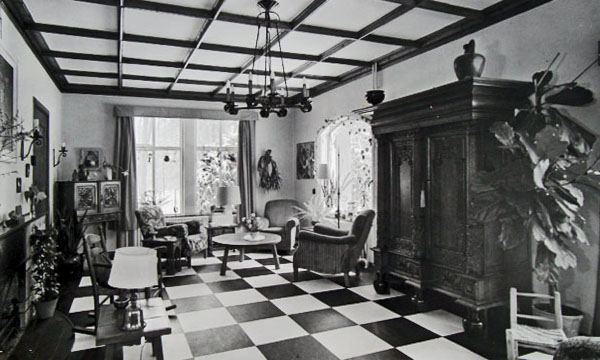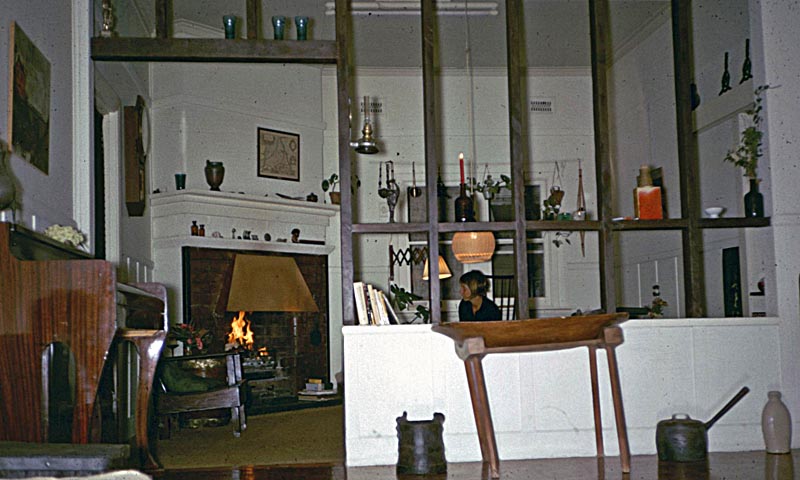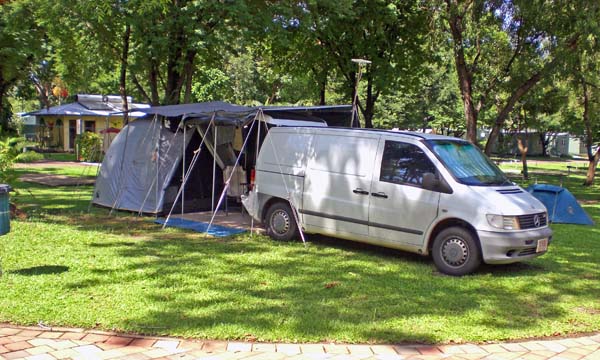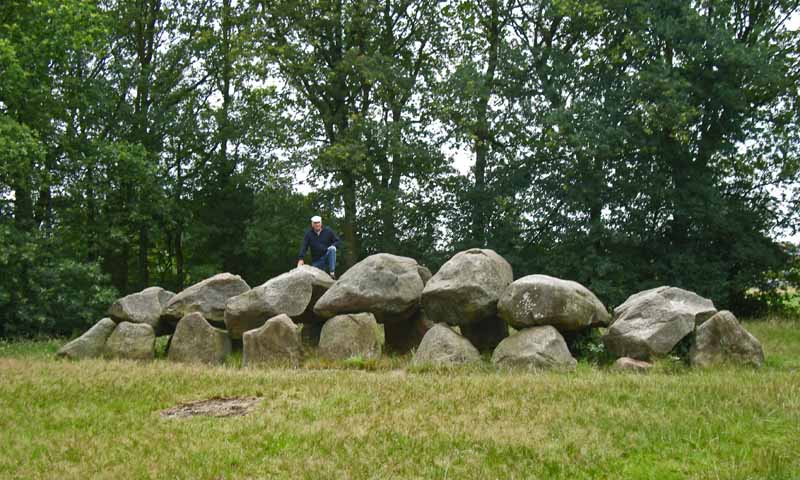7. Journeys are the midwives of Thought
Previous - Next - Contents
 Reading yet another book of
Alain de Botton (The Art of Travel) my mind is arrested by :
Reading yet another book of
Alain de Botton (The Art of Travel) my mind is arrested by :
"Journeys are the midwives of
thought."
"Few places are more conductive to internal conversations"
writes De Botton, "than moving planes, ships or trains."
"There
is an almost quaint correlation" he continues, "between
what is before our eyes and the thoughts we are able to have in our heads : large
thoughts at times requiring large views, and new thoughts, new places."
I go along with this most elegantly expressed proposition, adding that long drives in a
car are also most conductive to "internal conversations", moving along at similar
speeds to De Botton's favourite thinking vehicle, the train.
Our home with all its familiar objects (furniture, decorations, ornaments) surrounding
us daily (I agree with De Botton) are often holding us back, pinning us down to our
smallest regular self. We need to escape this safe cocoon, in order to
liberate our thoughts.
I personally believe that our "journeys" (escapes from our mundane self)
can be as small as reading a book or as large as the life changing migration
to another continent. My daily drives to the beach, local library or lunch, for example, are also stong urges within myself to get out of my self contained environment and free up my thoughts and feelings. It depends very much on our individual character and need for
personal growth how far we take this.
For me personal growth through new
experiences and the thoughts and ideas they evoke are absolutely essential
for my achievement of happiness and my fulfillment as a true human being. In
consequence I have gone, and still go, all the way!
Seen within the context of personal growth the element of thought
takes on a new and dominant role in my collection of "Factors for Happiness".
1. Health 2. Freedom
3. Thought 4. Sense of Purpose 5.
Family
6. Friendship
7. Environment
In this regard Freedom, Environment and Friends are directly and most strongly affected.
In order to liberate our thoughts and advance our personal growth we take full
advantage of our Freedom and change our Environment when we feel we become
"stale" in a place.
We even leave our (sometimes dearest) Friends behind,
because the environment of a constant set of friends also contains us within the one
image we have of ourselves. With every move we make to a new place and different social
environment (as I have experienced frequently throughout my life) we create an
opportunity to reinvent our self. This is a liberating experience and most
conductive to further personal growth.
 Ornaments and art objects in our home
Ornaments and art objects in our home
There appears to be a paradox concerning the ornaments and art objects with which we
decorate our homes.
On the one hand, according to Stendhal
("Beauty is the promise of Happiness") their beauty
contributes to our happiness, but on the other, according to De Botton
("Journeys are the midwives of Thought"), their familiarity
(over time) holds us back within our smallest regular self, restricting our
personal growth.
Although the point for many may perhaps be rather trivial, this has certainly not been
so in my own case.
My mother was a hugely creative interior decorator and our home Martinshof was a shining example of her skills. So us children grew
up in a wonderful visual environment that, I am sure, much contributed to our
appreciation of art (and to our sense of geometrical balance between different objects) throughout our lives.
As soon as I entered my mid teens I started
to help my mother in rearranging furniture and displays on a regular basis, because our
home never remained looking the same for very long.
 When I was married I continued to be in charge of the interior decorating (with Antien's
full consent) and the two of us spent lots of time collecting antiques from flea markets and farms in the country. In a
sense this was for us a way to express our identity. Also, as I explained earlier, our
own furniture, ornaments and art objects helped us and our children to feel at home,
wherever we were during my life as a roaming geologist.
When I was married I continued to be in charge of the interior decorating (with Antien's
full consent) and the two of us spent lots of time collecting antiques from flea markets and farms in the country. In a
sense this was for us a way to express our identity. Also, as I explained earlier, our
own furniture, ornaments and art objects helped us and our children to feel at home,
wherever we were during my life as a roaming geologist.
But when my mid life crisis hit and I split up with Antien, everything changed. As our two
children remained with their mother we considered it best that all our furniture,
ornaments, antiques etc. stay with them to giver them at least some sense of continuity to hang
on to. I personally also wanted to make a complete break from the past, and
having these former treasured belongings no longer around me very much helped me to do
that.
 Initially I collected a few nicknacks for in
my new flat right on the beach (in Adelaide), mainly coloured glass objects placed in
the windows to let the light shine through it. But by the time I moved into my new house at the Sunshine Coast I
kept only the absolute bare necessities (table, chairs, TV, office desk, bed) : austerity
without any embellishment. I wanted to be
able to see outside (through the large windows) onto nature without the eyes being distracted by trivial objects inside. This also gave me a clear sense of freedom. Initially I collected a few nicknacks for in
my new flat right on the beach (in Adelaide), mainly coloured glass objects placed in
the windows to let the light shine through it. But by the time I moved into my new house at the Sunshine Coast I
kept only the absolute bare necessities (table, chairs, TV, office desk, bed) : austerity
without any embellishment. I wanted to be
able to see outside (through the large windows) onto nature without the eyes being distracted by trivial objects inside. This also gave me a clear sense of freedom.
The ultimate step came of course when I sold my house, gave most of my
possessions to charity, and started living either in a tent or in my small cabin on the mango farm. I still appreciate (an feel happy because of) the beauty of art, ornaments, antiques,
etc. but I no longer wish to posses them or be continuously surrounded by them. A complete 180° turnaround from my earlier life.
If my body and mind are kind to me and remain relatively intact untill my last breath (as they have been to most of my family), I envisage ending up living in a simple caravan, located perhaps on a caravan park along a Queensland beach somewhere.
 Europe : a living room decorated with its cultural objects
Europe : a living room decorated with its cultural objects
The same paradox is present at a very much larger scale. We can view Europe for example
as a very large home or huge living room containing all the "objects" of its culture :
architecture, customs, history, food, arts, etc. And we have a choice of either enjoying
these as Stendhal objects of beauty stimulating our happiness, or as a De Botton
environment of familiarity, holding back our personal growth.
Antien and I
at the time (early 1960s) clearly went for the latter interpretation and it was this
very notion that prompted us to leave Europe and migrate to Australia. Over the years
however we have returned from time to time to enjoy brief periods of (and therefore much
enhanced) Stendhal moments of happiness.
As I think about this another curious (not to say quirky) fact which has puzzled me for
some time falls into place :
During my last year in Holland (1964-65) I was based in Assen completing my National service there. Here we regularly
visited several of the many hunebedden in the region, ancient graves, remnants
of an ancient culture 3,000 years (or more) ago.
We felt a peculiar affinity to
these sites and often came there with friends on moonlit nights sitting on the stones
drinking wine and chatting away. I now, some 55 years later, suddenly realise what this
quite possibly was all about. We were (unconsciously) trying to escape the
restricting familiarity of our modern European (Greek founded) culture, not
in terms of space, but in terms of time !.
PS
The above comments are of course equally valid for other peoples in their cultural
environment : Americans in the USA, Japanese in Japan and Australians in Australia. The
point is that one should escape one's own culture from time to time in order to grow
more fully as a modern human being.
Next Page -
Top of Page
Copyright © 2010 Michael Furstner
|




